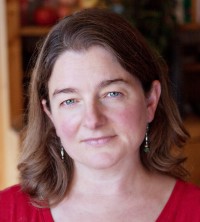The real stories behind refugee resettlement
Before the protests of support for refugees at airports this weekend, people were already sharing their lives with their new neighbors.

The first refugees I ever knew were from Laos, Cambodia, and Vietnam. They came to my hometown of Sioux Falls, South Dakota and quietly settled in. Soon they were followed by people from Siberia, Somalia, Armenia, Bosnia, and Eritrea—places I had never heard of and could not have found on a map. These refugees brought with them an incredible gift. They brought me the world—with so many cultures and languages that I became immediately fascinated and have remained so ever since. Because of these encounters, I became a writer with a strong desire to know and understand the experience of those considered strangers.
I’ve been watching the swell of support for refugees in airports across the country with a sense that I must not have been alone in being touched and changed by refugees. When I interviewed Special Representative Shaun Casey from the Office of Religion and Global Affairs at the U.S. State Department, he underscored what he has seen as he traveled around the country trying to better understand the connection between refugee resettlement and religious communities: “Something is afoot at the grass roots,” he said. People everywhere are responding personally to the greatest refugee crisis the world has seen since World War II. And for every community receiving people seeking a new life in another country, there is the opportunity to have their perspective expanded, like what happened in my hometown.
When I went to Missoula, Montana in October to learn about refugees arriving to that city and to write an article for the Century, I felt a sense of homecoming, even though I had never been to Missoula before. I went to English classes, visited churches, and scoured neighborhoods. I drove by soccer fields scanning for people who might be from the Democratic Republic of the Congo. I discussed the likelihood of finding cassava root in the grocery store and whether the DRC was primarily a tea-drinking or a coffee-drinking country. (Coffee, as it turns out.) A 16-year-old girl told me about her relief at putting down the labor of "digging" in her refugee camp—her word for the subsistence agriculture that had dominated her life until now. Another refugee told me of his longing for the people of the United States to know what their lives had been like.
If you want to know what refugee resettlement is really like in the United States, if you find yourself responding to the messages of fear about refugees, reach out. Spend some time with refugees. They will tell you of the intense screening process, the vulnerability of not knowing where in the entire world you may be sent or how the people there will receive you, of the disorientation of learning new ways of telling and organizing time, and of the volunteers who greet and orient and aid you as you make your way in a strange new land.






